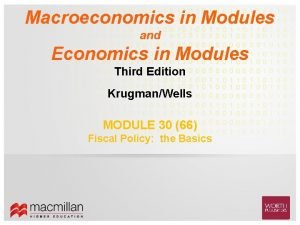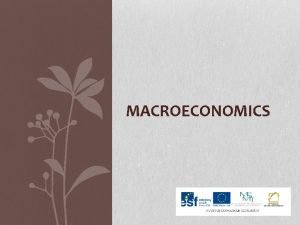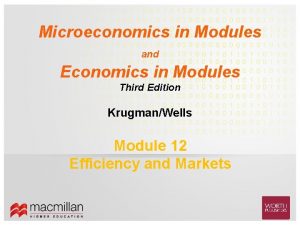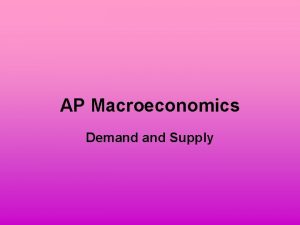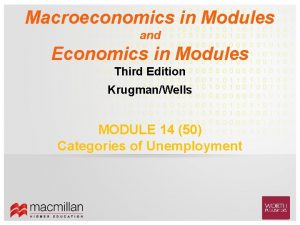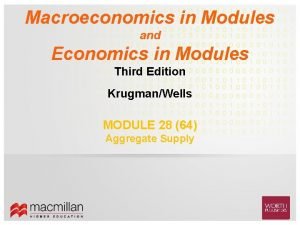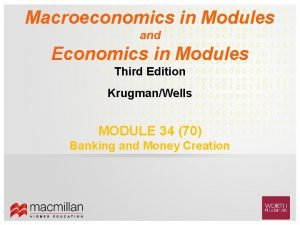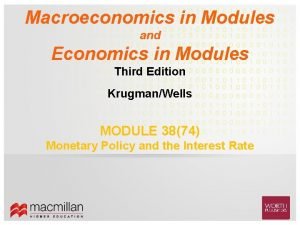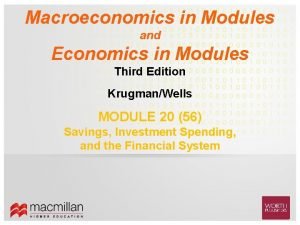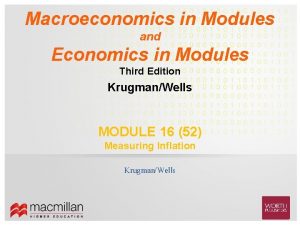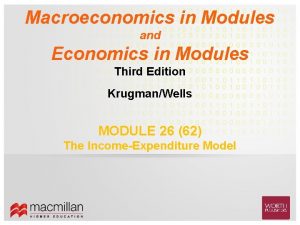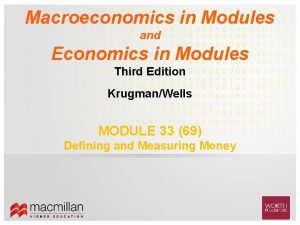Macroeconomics in Modules and Economics in Modules Third











- Slides: 11

Macroeconomics in Modules and Economics in Modules Third Edition Krugman/Wells MODULE 36(72) The Federal Reserve and Monetary Policy

What You Will Learn 1 The functions of the Federal Reserve System 2 The major tools the Federal Reserve uses to serve its functions 2

The Functions of the Federal Reserve System • Provide financial services • Supervise and regulate banking institutions • Maintain the stability of the financial system • Conduct monetary policy 3

How the Fed Conducts Policy • Sets reserve requirements - rules set by the Federal Reserve that determine the minimum reserve ratio for a bank. • For example, in the United States, the minimum reserve ratio for checkable bank deposits is 10%. – The federal funds market allows banks that fall short of the reserve requirement to borrow funds from banks with excess reserves. – The federal funds rate is the interest rate determined in the federal funds market. 4

How the Fed Conducts Policy • Operates the discount window – an arrangement in which the Federal Reserve stands ready to lend money to banks in trouble. – The discount rate is the rate of interest the Fed charges on loans to banks. 5

How the Fed Conducts Policy • Conducts open-market operations – the principal tool of monetary policy. – The Fed can increase or reduce the monetary base by buying government debt (U. S. Treasury Bills) from banks or selling government debt to banks. The Federal Reserve’s Assets and Liabilities: 6

Open-Market Operations by the Federal Reserve An Open-Market Purchase of $100 Million 7

Open-Market Operations by the Federal Reserve An Open-Market Sale of $100 Million 8

Economics in Action Who Gets the Interest on the Fed’s Assets? • Who gets the profits? U. S. taxpayers do. • The Fed keeps some of the interest it receives to finance its operations, but turns most of it over to the U. S. Treasury. • For example, in 2012 the Federal Reserve system earned net income of $91. 0 billion—largely in interest on its holdings of Treasury bills, of which $88. 9 billion was returned to the Treasury. • The Fed decides on the size of the monetary based on economic considerations—in particular, the Fed doesn’t let the monetary base get too large, because that can cause inflation. 9

Summary 1. The Federal Reserve System provides financial services, supervises and regulates banking institutions, maintains the stability of the financial system, conducts monetary policy. 2. The monetary base is controlled by the Federal Reserve, the central bank of the United States. 3. The Fed regulates banks and sets reserve requirements. To meet those requirements, banks borrow and lend reserves in the federal funds market at the federal funds rate. 10

Summary 4. Through the discount window facility, banks can borrow from the Fed at the discount rate. 5. Open-market operations by the Fed are the principal tool of monetary policy: the Fed can increase or reduce the monetary base by buying U. S. Treasury bills from banks or selling U. S. Treasury bills to banks. 11
 Macroeconomics in modules
Macroeconomics in modules Branch of economics
Branch of economics Economics modules
Economics modules Mount and hume classification
Mount and hume classification G j mount classification of caries
G j mount classification of caries Economics and business economics maastricht
Economics and business economics maastricht Principle of economics oxford
Principle of economics oxford Mathematical vs non mathematical economics
Mathematical vs non mathematical economics Example of micro economics
Example of micro economics Definition of macroeconomics
Definition of macroeconomics New classical macroeconomics
New classical macroeconomics Nicepp
Nicepp
